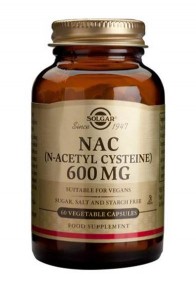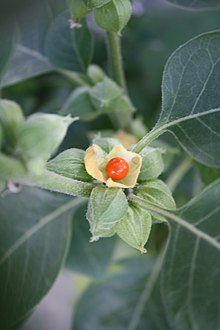7-Year-Olds At Risk for Schizophrenia, But Not Bipolar Disorder, Show Specific Types of Cognitive Dysfunction
 A large Danish study investigated whether children at risk for schizophrenia and bipolar disorder would show signs of cognitive problems. The study by researcher Nicoline Hemager and colleagues was published in the journal JAMA Psychiatry in 2018.
A large Danish study investigated whether children at risk for schizophrenia and bipolar disorder would show signs of cognitive problems. The study by researcher Nicoline Hemager and colleagues was published in the journal JAMA Psychiatry in 2018.
The researchers identified 7-year-olds,197 who had family members with schizophrenia, 118 who had family members with bipolar disorder, and 199 control 7-year-olds with no family history of these illnesses. Those children at risk for schizophrenia had significantly more cognitive deficits and behavioral disorders than the controls, while those children at risk for bipolar disorder did not differ significantly from the controls. The deficits among the children at risk for schizophrenia were in the areas of processing speed and working memory, executive and visuospatial functions, and declarative memory and attention.
The researchers indicated that the neurocognitive profile seen in the children at risk for schizophrenia could help clinicians identify these children for early intervention.
Lurasidone Highly Effective in Open Continuation in Youth with Schizophrenia
 Researcher Michael Tocco and colleagues reported at the 2019 meeting of the American Academy of Child and Adolescent Psychiatry (AACAP) that in adolescents between the ages of 13 and 17 with schizophrenia, taking lurasidone for two years following a double-blind, placebo-controlled study led to steady improvement. There was a remarkably high 91% response rate and a 66% remission rate. Out of all the participants, 51.3% were rated as recovered.
Researcher Michael Tocco and colleagues reported at the 2019 meeting of the American Academy of Child and Adolescent Psychiatry (AACAP) that in adolescents between the ages of 13 and 17 with schizophrenia, taking lurasidone for two years following a double-blind, placebo-controlled study led to steady improvement. There was a remarkably high 91% response rate and a 66% remission rate. Out of all the participants, 51.3% were rated as recovered.
Newly Identified Effects of N-Acetylcysteine
 In a talk at the 2019 meeting of the International Society for Bipolar Disorders, researcher Michael Berk, who was responsible for some of the initial findings on the effects of the antioxidant N-acetylcysteine (NAC), summarized some of the newer findings about the treatment.
In a talk at the 2019 meeting of the International Society for Bipolar Disorders, researcher Michael Berk, who was responsible for some of the initial findings on the effects of the antioxidant N-acetylcysteine (NAC), summarized some of the newer findings about the treatment.
NAC has been found to be effective in bipolar depression and in the treatment of both positive and negative symptoms of schizophrenia. It also helps in the avoidance of cocaine, alcohol, tobacco, and marijuana. It can reduce habitual behaviors such as gambling, obsessive compulsive disorder (OCD), and trichotillomania (compulsive hair-pulling) and irritability and motor stereotypy (repeated movements) in autism.
A 2016 study by researcher Sudie E. Back and colleagues in the Journal of Clinical Psychiatry found that NAC improved symptoms of post-traumatic stress disorder (PTSD) in veterans who also had depression and substance use disorders at a dosage of 2.4 grams/day.
According to Berk, NAC also reduces the incidence of lithium-related renal failure and reduces mitochrondrial toxicity. One study reported that it improved working memory in patients with schizophrenia.
In his talk, Berk also noted that statins offer an interesting new avenue for treatment. Several studies have suggested statins can improve mood or reduce the likelihood of a depressive recurrence. Angiotension-active drugs (inhibitors) have also been reported to decrease the incidence of depression and to improve cognition.
Vitamin D Deficiency in Newborns Linked to Higher Risk of Schizophrenia in Adulthood
 A 2018 study by Darryl W. Eyles in the journal Scientific Reports found that newborns with vitamin D deficiency were more likely to develop schizophrenia later in life. The study made use of several Danish data depositories and had a large sample size of 2,602 participants. In this case control study, registries of patients treated for schizophrenia were matched up to preserved dried blood samples collected at their births, and these were compared to other dried blood samples from people without schizophrenia who shared the same sex and birthdate.
A 2018 study by Darryl W. Eyles in the journal Scientific Reports found that newborns with vitamin D deficiency were more likely to develop schizophrenia later in life. The study made use of several Danish data depositories and had a large sample size of 2,602 participants. In this case control study, registries of patients treated for schizophrenia were matched up to preserved dried blood samples collected at their births, and these were compared to other dried blood samples from people without schizophrenia who shared the same sex and birthdate.
The researchers divided participants into quintiles based on vitamin D levels at birth. Compared to those who fell into the fourth quintile, those in the lowest quintile were 44% more likely to be diagnosed with schizophrenia in adulthood. The researchers also determined polygenic risk scores for each participant, that is, they calculated schizophrenia risk based on the presence of various genes. The two processes together explained 1.2% of the variance in schizophrenia diagnoses.
Risk factors for vitamin D deficiency include being born in the winter or spring, living in high-latitude locations, spending early life in an urban setting, and being darker-skinned (especially in high-latitude locations). These risk factors are all correlated with decreased skin absorption of UV rays from the sun, which is how the human body produces vitamin D. The vitamin D receptor is expressed in the brain in areas that are relevant to schizophrenia, such as areas with a lot of dopamine activity, and each of the above risk factors also applies to schizophrenia.
As expected, participants born in the winter and spring had lower vitamin D levels. Participants whose parents had immigrated to Denmark had lower vitamin D than those with parents native to Denmark.
Newborns’ vitamin D levels depend completely on their mothers’ vitamin D levels, so Eyles and colleagues suggest that ensuring pregnant women have adequate vitamin D levels could prevent some cases of schizophrenia.
Inflammation Linked to Poor Sleep Quality and Worse Executive Functioning
At a recent scientific meeting, researcher Ellen E. Lee and colleagues reported that compared to healthy volunteers, people with bipolar disorder or schizophrenia had elevated levels of inflammatory markers, which were associated with poor sleep.
According to self-reports, people in the schizophrenia and bipolar disorder group had worse sleep quality than the control group. Those with schizophrenia or bipolar disorder also had significantly higher levels of the inflammatory markers CRP, IL-6, and TNF alpha compared to the healthy volunteers. Among people with bipolar disorder, executive functioning and sleep quality had a strong inverse association to levels of IL-6, such that lower sleep quality and worse executive functioning were associated with higher levels of IL-6. These findings suggest that sleep disturbance and inflammation may have negative consequences for cognitive functioning.
Supplements for the Treatment of Schizophrenia
At the 2018 meeting of the North Carolina Psychiatric Association, researcher Karen Graham reviewed evidence for adjunctive treatments that may help treat schizophrenia when added to antipsychotic medications.
Graham endorsed omega-3-fatty acids, saying that they may delay the conversion to schizophrenia in young people at high risk for the illness. Data in chronic schizophrenia are more equivocal.
Data on the effects of vitamin D3 in schizophrenia are mixed, but D3 is often low in patients with psychotic disorders, and supplementation with vitamin D3 in the general population has been associated with decreases in cancer and all-cause mortality.
Graham indicated that in three studies vitamin B6 (pyridoxine) decreased tardive dyskinesia, a side effect of antipsychotic medication that is characterized by repetitive or jerky involuntary movements of the face and body. B6 also reduced the severity of akathisia or restless legs, which is comparable to the effects of 40mg/day of the beta blocker drug propranolol. Graham recommended a dose of 300mg/day of B6 that could be increased up to 600mg twice per day. The onset of effects usually begins by week three, and the cost ranges from 25 to 80 cents per day.
The antioxidant supplement N-acetylcysteine (NAC) may also help. Graham described six studies that found NAC had positive effects on negative symptoms (apathy, blunted emotions, etc.) and/or cognition in patients with schizophrenia. The dosage in these studies was usually 2 grams/day for 24 weeks. The cost was 50 cents per day.
Two 8-week trials of L-theanine (an amino acid found in green and black tea) at doses of 400mg/day improved negative symptoms and anxiety in 40 patients with schizophrenia. The rationale for the study was that L-theanine increases inhibitory neurotransmitters, modulates the amino acid 5-HTP and the neurotransmitter dopamine, increases brain-derived neurotrophic factor (BDNF), and may be neuroprotective after a heart attack or a traumatic brain injury. The cost is 40 cents per day.
Graham reported that the supplement ginkgo biloba produced significant improvement in negative symptoms and total symptoms in eight clinical trials that included a total of 1,033 patients with schizophrenia. Doses ranged from 240 to 360 mg/day. These supplements (usually extracted from leaves of the ginkgo tree) have not been found to have many side effects, but they can reportedly increase post-operative bleeding. Gingko biloba supplements cost 20 to 80 cents per day. There is also at least one positive study of ginkgo biloba in tardive dyskinesia.
Three of four studies of cannabidiol in schizophrenia have been positive (at doses of 600, 800, and 1,000 mg/day in studies that lasted four to six weeks). There are now six additional ongoing studies listed on the website clinicaltrials.gov. There is little of this diol component in regular marijuana, and the cost of pure cannabidiol is unfortunately an exorbitant $60 to $100/day.
There is a positive controlled study of the herb ashwagandha in 66 patients with schizophrenia.
Not included in Dr. Graham’s review was the prenatal treatment of women with phosphatidylcholine (900mg/day) followed by supplements in the newborn, which normalized an aspect of sensory gating known as P50 in patients with schizophrenia. Healthy individuals show a reduced response to an auditory cue when it is repeated 50 milliseconds after the initial cue. In people with schizophrenia, response to the repeated cue is not suppressed. This has been suggested by researchers Robert Freedman and Randal G. Ross in a 2015 article in the Shanghai Archives of Psychiatry as a possible primary preventive approach to schizophrenia.
Pregnant women in their second and third trimesters should at least consume foods high in choline, especially if the fetus is at high risk for schizophrenia because of a family history of schizophrenia.
Beef liver is very high in choline, providing 420mg per slice. Other animal products provide significant choline, such as eggs (120 mg/egg), beef (90mg/100g), chicken liver (85mg/liver), fish (85mg/100g), bacon (35mg/strip) or other pork, chicken (67mg/100g). Tofu (36mg/half cup) and cereal (22mg/half cup) are also sources of choline.
Foods High in Choline
| Beef liver | 1 slice | 420mg choline; |
| Egg | 1 egg | 120; |
| Beef | 100 gm | 90; |
| Chicken liver | 1 liver | 85; |
| Fish | 100 gm | 85; |
| Bacon or pork | 2 strips bacon | 70; |
| Chicken | 100 gm | 67; |
| Tofu | 120 ml (0.5 cup) | 36; |
| Cereal | 120 ml (0.5 cup) | 22 |
Early Intervention Works in Schizophrenia: Also Needed in Bipolar Disorder
For twenty years, evidence has shown that early intervention can ameliorate many of the adverse consequences of schizophrenia. In a 2018 article in the journal Annual Review of Clinical Psychiatry titled “Transforming the treatment of schizophrenia in the United States: The RAISE Initiative,” Lisa B. Dixon and colleagues described the importance of early intervention in schizophrenia. RAISE stands for Recovery After an Initial Schizophrenia Episode. Dixon and colleagues emphasize that shortening the time that a patient’s psychosis goes untreated, which averages 74 months, is critical to achieving good outcomes. In parallel to these consistent findings, researchers of bipolar disorder (including this editor Robert M. Post and colleagues) have found that an increased length of the interval before treatment is initiated in childhood-onset bipolar disorder is associated with a poor outcome in adulthood.
The RAISE program consists of four interventions: personalized psychopharmacology using a computerized decision support system, individual resilience therapy, family psychoeducation and therapy, and supportive employment and education. Compared with patients receiving standard treatments, patients who participated in the RAISE program showed greater improvements on almost all measures, including the Heinrichs-Carpenter Quality of Life Scale (main outcome), the Calgary Depression Scale for Schizophrenia, the Positive and Negative Syndrome Scale, treatment duration, and engagement in work and school. Moreover, the improvements were more substantial among patients with a shorter duration of untreated psychosis.
Editor’s Note: These findings are of great importance in their own right, but they also have great implications for treatment and research efforts in bipolar disorder. A 2013 randomized study by Lars Kessing and colleagues published in the British Journal of Psychiatry found that in bipolar patients hospitalized for a first or second episode of mania, two years of comprehensive treatment with psychotherapy, pharmacotherapy, and illness education that included mood monitoring and early symptom recognition was vastly superior to typical treatment, and this held true even six years later. In a 2014 article in the Journal of Clinical Psychiatry and a 2016 article in the journal Bipolar Disorders, researcher Jan Marie Kozicky and colleagues reported that in patients hospitalized with a first episode of mania, cognitive functioning and brain imaging abnormalities, respectively, returned to normal over the next year only if the patients experienced no further mood episodes. The message is clear: we must treat the first episode of mania comprehensively to avoid long-term deterioration, which occurs as a function of the number of episodes of mania or depression a patient experiences. However, this early multimodal approach is rarely taken in the US.
In schizophrenia, Dixon and colleagues noted that: “After the RAISE study reports were made available, Congress allocated additional funding to the community mental health …program, leading to growth in the number of…programs across the United States; they were expected to reach 48 states in 2018.”
The contrast between these efforts in schizophrenia and their virtual absence in bipolar disorder is incomprehensible and tragic. Studies in early schizophrenia have been funded for 25 years, while almost none have been funded in bipolar disorder, even in recent years. Community mental health programs for early schizophrenia will soon exist in 48 states; for patients with bipolar disorder there are no programs available in any state that I am aware of. The incidence of bipolar is about three times that of schizophrenia, and the long-term outcomes are often as devastating in bipolar disorder as in schizophrenia. There is a high incidence of drug abuse; social, educational and occupational deficits; and suicide in bipolar disorder. Early intervention with the many safe supplements, nutraceuticals, and well-tolerated drugs that are currently available to adult patients should be studied in young people with bipolar disorder, but such studies neither being funded nor conducted.
The reality is that childhood-onset bipolar disorder is poorly recognized and treated in the US, largely because of a paucity of treatment-related studies and knowledge about the best options for these young patients. If a reader of the BNN knows how to influence advocacy groups, leaders in the Substance Abuse Mental Health Services Administration (SAMHSA) and the National Institutes of Mental Health (NIMH), or influential politicians, it would be useful to take the initiative in bringing some of these deficits and disparities to their attention. Something must be done; ideas about how to do it are welcome. My own efforts to get funding for a childhood-onset bipolar research network in collaboration with such luminaries in the field as David Miklowitz (UCLA), Kiki D. Chang (Stanford University), Boris Birmaher (University of Pittsburg), Benjamin Goldstein (Stonybrook Research Institute), Eric Youngstrom (UNC, Chapel Hill), Soledad Romero (Hospital Clinic of Barcelona), and Josefina Castro Fornieles (University of Barcelona) have not been successful. We will keep trying, but the field needs to reach beyond the many investigators who are advocating for more treatment research to other people with more influence.
Cannabidiol May Help Treat Schizophrenia
 A 2017 article by researcher Philip McGuire and colleagues in the American Journal of Psychiatry reports that when added to antipsychotic medication, cannabidiol, a component of marijuana, improved positive symptoms of schizophrenia, such as hallucinations and delusions, more than did the addition of a placebo.
A 2017 article by researcher Philip McGuire and colleagues in the American Journal of Psychiatry reports that when added to antipsychotic medication, cannabidiol, a component of marijuana, improved positive symptoms of schizophrenia, such as hallucinations and delusions, more than did the addition of a placebo.
In the double-blind, parallel-group study, 43 participants received 1000 mg/day of cannabidiol in addition to their regular antipsychotic medication, while 45 participants received a placebo alongside their regular medication.
Side effects were minimal, and after six weeks those who received cannabidiol had decreased positive symptoms and were more likely to be considered improved and not severely unwell.
Editor’s Note: It is important to emphasize that cannabidiol is only a minor component of marijuana, which contains much more tetrahydrocannabinol (THC), which is psycho-mimetic, i.e. it can worsen psychosis. Pure cannabidiol is not readily available to the public.
Withania Somnifera Herb Normalizes Sensory Processing Measure in Schizophrenia
 One of the best biomarkers of schizophrenia is low auditory mismatch negativity. Auditory mismatch negativity describes the pattern of electrical activity that occurs in the brain when a repeated sound is interrupted by a mismatched sound, such as a change in pitch or volume.
One of the best biomarkers of schizophrenia is low auditory mismatch negativity. Auditory mismatch negativity describes the pattern of electrical activity that occurs in the brain when a repeated sound is interrupted by a mismatched sound, such as a change in pitch or volume.
At the International Congress on Schizophrenia Research, Paulina S. Marell and colleagues described their pilot study of the antioxidant and anti-inflammatory herb Ashwagandha or Withania Somnifera (also known as Indian ginseng, poison gooseberry, or winter cherry). In 11 patients with schizophrenia, the herb normalized mismatch negativity compared to placebo.
Marell and colleagues wrote that the herb “recover[ed] some of the impaired early sensory/cognitive potentials in schizophrenia.” Since normal cognition relies on sensory processing, normalizing these functions in people with schizophrenia could improve their symptoms.
A 2018 study by researcher K.N. Roy Chengappa and colleagues in the Journal of Clinical Psychiatry reports that adding Withania Somnifera to patients’ regular antipsychotic medication improved negative symptoms of schizophrenia and total symptoms compared to adding placebo.
Editor’s Note: These studies, taken together, suggest the utility of adding this supplement to the treatment regimen for schizophrenia.
Sodium Benzoate Helps Treat Schizophrenia When Added to Clozapine
In a 2017 article in the journal Biological Psychiatry, Chieh-Hsin Lin and colleagues reported that sodium benzoate, a common food preservative, may augment the effects of clozapine in patients with schizophrenia.
Clozapine is the most effective antipsychotic available, but as many as 40–70% of patients with treatment-resistant schizophrenia do not respond to it. For those with a poor response to clozapine, sodium benzoate may offer some hope.
In a randomized, double-blind trial, sixty inpatients taking clozapine for schizophrenia were divided into three groups. One group received an additional 1 g/day of sodium benzoate, another received 2 g/day, and the third received placebo in addition to clozapine. Both groups taking sodium benzoate and clozapine showed improvements in negative symptoms of schizophrenia (which can include apathy and inability to experience pleasure) compared to the group taking only clozapine. The larger 2g dose also improved positive symptoms of schizophrenia (such as hallucinations or delusions) and quality of life. Changes in levels of the antioxidant catalase were linked to the total improvement in symptoms and the improvement in positive symptoms. Sodium benzoate did not seem to cause any side effects.
Editor’s Note: Sodium benzoate is a D-amino acid oxidase inhibitor that activates NMDA receptors and increases levels of the amino acid D-serine in the brain by preventing it from breaking down. D-serine can reverse the effects of the illicit drug PCP, and very high doses of D-serine have improved the effectiveness of atypical antipsychotics in people with schizophrenia. By increasing levels of D-serine, sodium benzoate may offer new benefits to people with schizophrenia, especially those who have not responded to other treatments.





